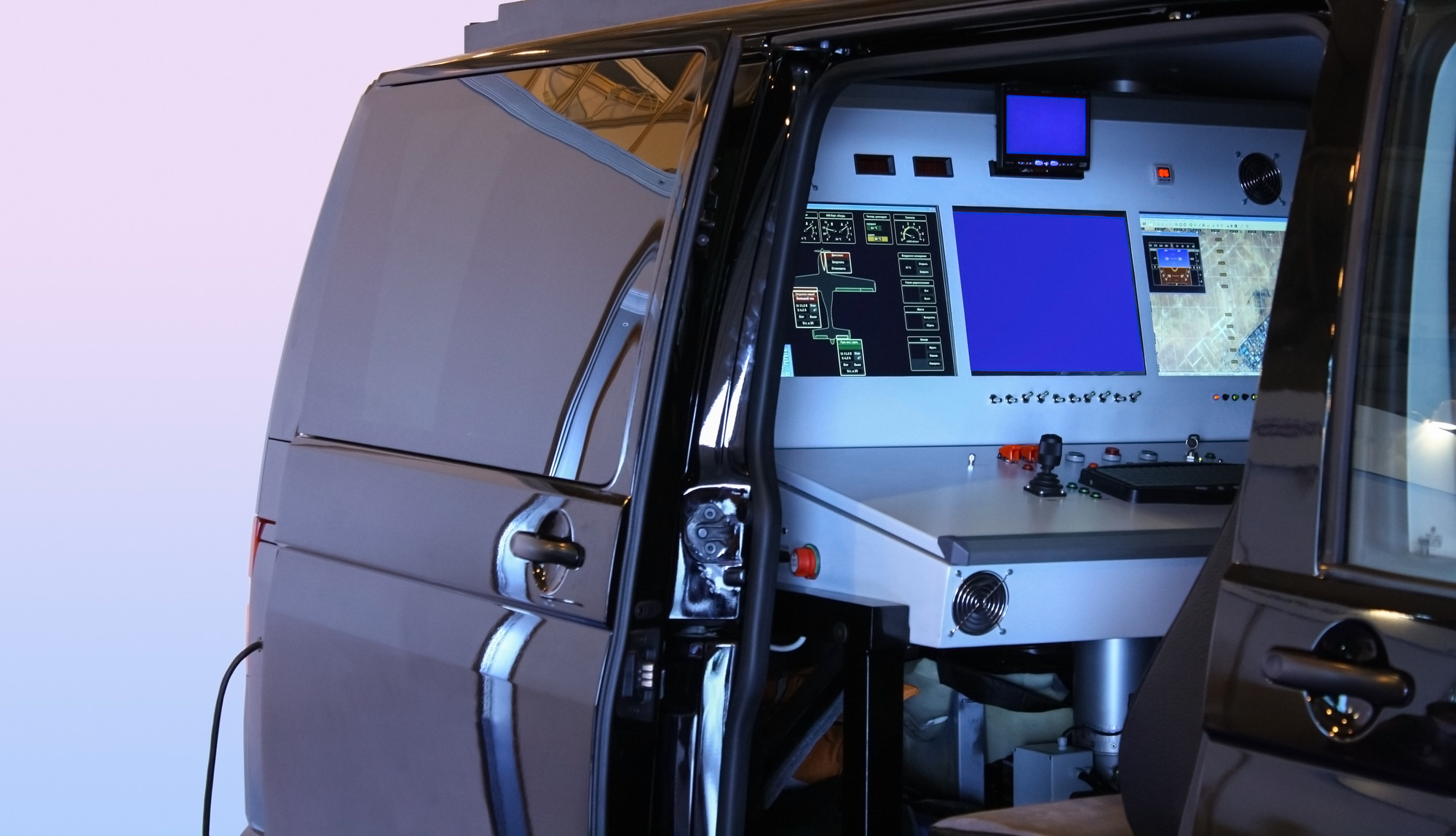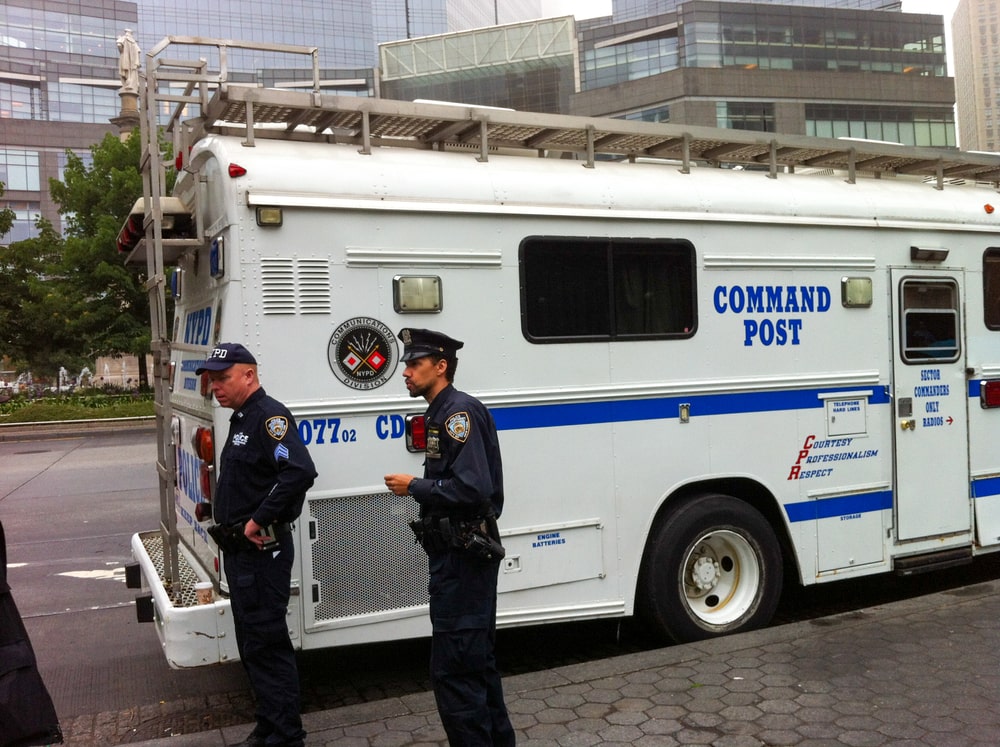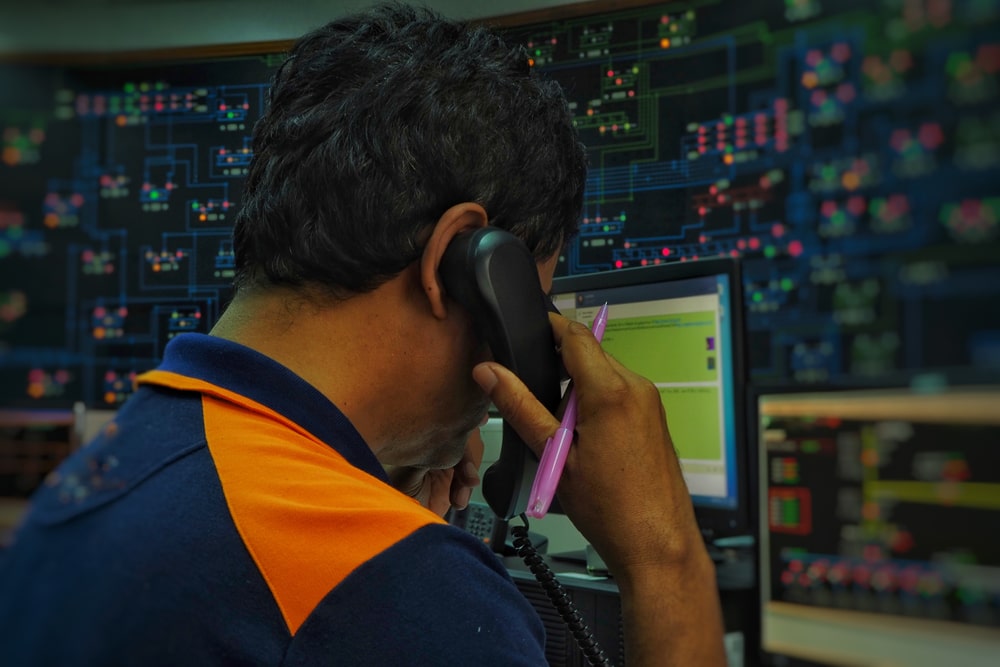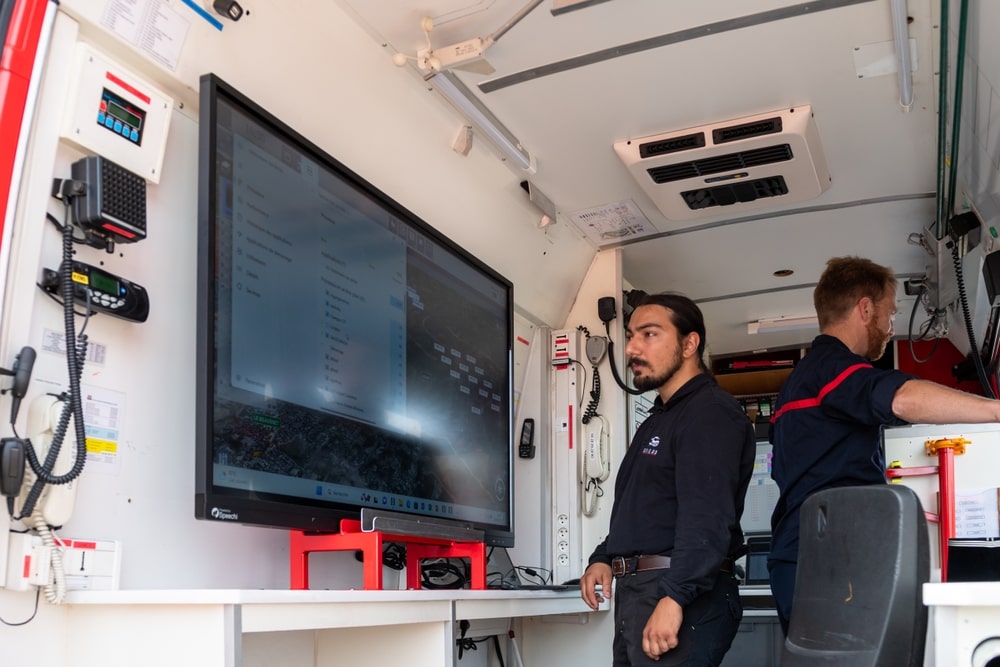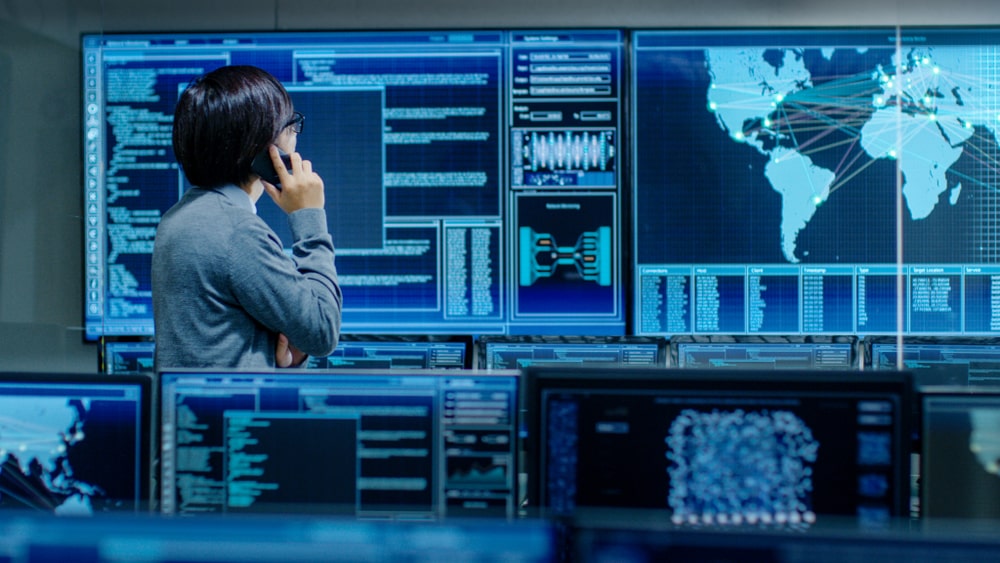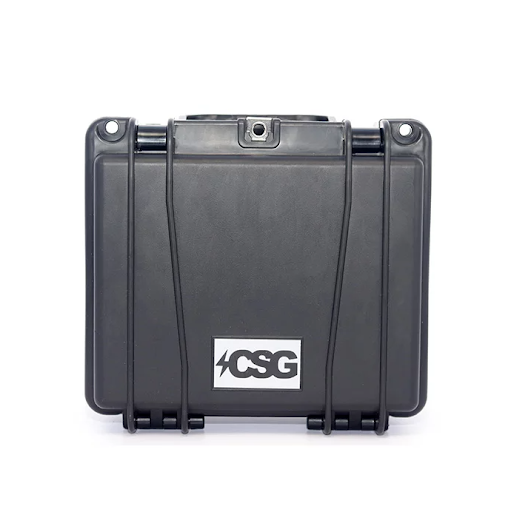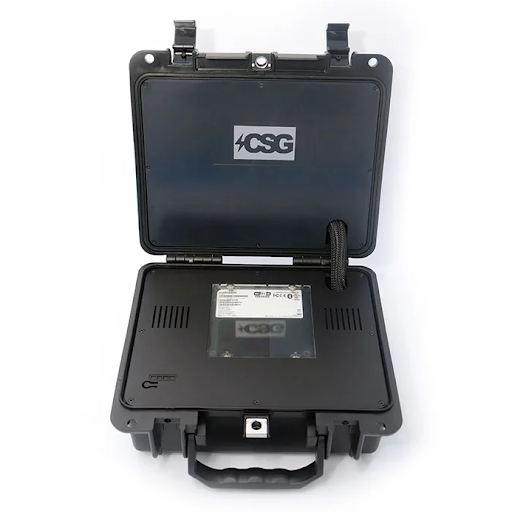Did you know that some communities are more susceptible to the risks that accompany natural disasters like wildfires, flooding, droughts, and extreme weather?
With limited resources to support response efforts, adequate communication systems are one of these areas’ most significant challenges. Because of this, these communities may not receive the same high-quality care as those in resource-dense, urban areas.
But mobile command centers act as a “pop-up network” that can be deployed virtually, bridging communication gaps and enabling first responders to provide high-quality care to rural communities. These centers ensure that any area, rural or otherwise, receives proper attention and support during emergencies, reducing the risks and dangers of natural disasters.
In this article, we’ll explore the advantages of mobile command centers and their importance in ensuring effective emergency response.
WHAT ARE MOBILE COMMAND CENTERS, AND WHY ARE THEY IMPORTANT?
Mobile Command Vehicles (MCVs) are a specific type of mobile command center strategically employed to enhance or restore communication and coordination amid emergency incidents and high-security situations across the country. These mobile command units utilize satellite and internet connectivity, interoperable radios, and video functionalities to enhance communication between FPS (Federal Protective Service) resources and various federal and local response and support units.
This critical technology is essential for frontline workers like police, firefighters, and public safety officials because it allows for rapid deployment.
Rapid deployment is vital in emergencies — because time is of the essence: Emergency responders and personnel need to quickly and efficiently deploy resources to the affected area to prevent further damage and save lives. The longer it takes for responders to arrive and set up their equipment and supplies, the greater the risk to individuals and the community.
Mobile command centers are equipped with advanced communication technologies, such as satellite and wireless systems, allowing quick and reliable communication with on-site teams and external organizations.
WHO WOULD BENEFIT FROM MOBILE COMMAND CENTERS?
MCCs are crucial systems that all frontline community officials should utilize, including:
- Emergency Responders: Fire departments, law enforcement agencies, emergency medical services (EMS), and search and rescue teams can benefit significantly from mobile command centers. These vehicles provide a centralized hub for coordinating response efforts during disasters, accidents, and large-scale emergencies.
- Emergency Management Agencies: Local, state, and federal emergency management agencies use mobile command centers to manage and coordinate disaster response and recovery efforts. These centers are essential for establishing effective incident command during natural disasters like hurricanes, floods, and wildfires.
- Government Agencies: Various government agencies, including those responsible for public safety, homeland security, transportation, and public health, can benefit from mobile command centers to manage incidents and security operations efficiently.
- Military: The military uses mobile command centers for rapid deployment and command and control during military operations, including exercises, peacekeeping missions, and responses to security threats.
- Large-Scale Event Management: Organizations responsible for managing large-scale events, such as festivals, sporting events, or political gatherings, can use mobile command centers to enhance security, manage crowds, and respond to emergencies effectively.
- Public Health Agencies: Public health agencies utilize mobile command centers during health emergencies, pandemics, and vaccination campaigns to coordinate response efforts, provide medical services, and communicate with the public.
- Utilities and Critical Infrastructure Providers: Organizations responsible for critical infrastructure, like power companies and water utilities, may use mobile command centers to manage response and recovery efforts during infrastructure failures or cyberattacks.
- Transportation Authorities: Transportation agencies use mobile command centers to manage highway, railway, and airport incidents. These centers help coordinate traffic management, accident response, and public safety efforts.
- Corporate and Private Sector: Large corporations, particularly those with extensive facilities and operations, may deploy mobile command centers for crisis management, security, and business continuity planning.
- Event Security and Private Security Firms: Event security providers and private security firms use mobile command centers to enhance security measures and respond to security incidents during events or security operations.
- Nonprofit Organizations: Nonprofit organizations involved in disaster relief, humanitarian aid, and community support can use mobile command centers to coordinate relief efforts during crises.
- Research and Surveillance: Scientific research organizations and environmental agencies may use mobile command centers for field research, environmental monitoring, and data collection in remote or challenging environments.
A local mobile crime lab, bomb squad, or search and rescue unit likely also relies on MCCs to communicate with the proper departments and promptly pass on information or emergency assistance requests.
WHEN ARE MOBILE COMMAND CENTERS USED?
Mobile command centers provide a centralized location for communication, coordination, and command. They are deployed in response to natural disasters and emergencies, such as:
- Emergency response situations: Natural disasters, fires, or terrorist attacks
- Significant events or gatherings: Concerts, festivals, or sporting events where coordination and communication between multiple agencies are needed
- Law enforcement operations: SWAT team activities or hostage situations
- Military operations: Field command centers for troops or aircraft control centers
- Natural disaster recovery efforts: Providing medical support or coordinating relief efforts in affected areas
- Mobile clinics or hospitals: Providing medical services in remote areas or disaster zones
- Command centers for remote construction or engineering projects: Oil rig operations or mining sites
Reasons to Use a Mobile Command Center:
Whether your operations are located in a bustling metropolitan area with abundant technology resources or a quiet rural town with minimal activity, mobile command centers offer numerous advantages crucial for staying connected and well-prepared before disaster strikes.
Benefit #1: Enhances Rural Emergency Communication Capabilities
Emergency response teams encounter unique challenges in rural areas due to long distances, limited infrastructure, and constrained resources. Mobile command centers (MCCs) play a vital role in overcoming these challenges by enabling swift communication and coordination among various emergency personnel, including police departments and healthcare services. These MCCs establish a central location where rural emergency response teams can rapidly request assistance, backup, or supplies during natural disasters or power outages.
Benefit #2: Secures First Responder Communications
Mobile command centers empower first responders to maintain seamless communication with one another and their headquarters, even when traditional communication channels are disrupted or overwhelmed. For instance, the MCC Brute Advanced, designed for critical emergency services deployment, offers VPN functionality, 5G readiness, and support for up to 128 Wi-Fi connections. This high-speed networking capability in remote locations enhances reliability, security, and flexibility, effectively turning MCCs into portable networks capable of transmitting vast amounts of information for swift response and informed decision-making.
Benefit #3: Task-Specific Customization
Depending on the nature of the emergency, first responders may require specialized equipment to carry out their duties effectively. Mobile command centers can be tailored to transport specific equipment and supplies, such as medical gear, search and rescue tools, hazardous materials (HAZMAT) suits, or aerial surveillance drones. This customization ensures that MCCs are fully equipped to meet the unique needs of various emergency scenarios.
Investing in a mobile command center can enhance your organization’s preparedness and responsiveness to emergencies, ultimately contributing to the safety and well-being of your community.
WHAT IS INSIDE A MOBILE COMMAND CENTER?
The contents of a new mobile command vehicle can vary depending on the organization’s specific needs and the types of emergencies it is designed to respond to. Standard features and equipment found in most mobile command vehicles include communication equipment, workstations, storage space, restrooms, and surveillance equipment.
But emergency personnel and public safety officials can also use mobile command center handheld devices without needing an extra vehicle.
Portable MCCs are about the size of a briefcase and can be stored in police cruisers, ambulances, and fire trucks. They can be customized to equip communications systems, data collection and real-time sharing capabilities, mobile apps like databases and monitoring tools, and long battery life.
HOW MUCH DO MOBILE COMMAND CENTERS COST?
A new mobile command vehicle can cost anywhere from $200,000 to over $1 million. The cost can vary significantly depending on several factors, including the type of vehicle, equipment, technology, and any customization or special features.
However, portable mobile command centers are much less expensive: These portable devices can range from a few hundred dollars to several thousand dollars, depending on communication capabilities, data collection, durability, and customization.
They are incredibly beneficial for rural emergency response teams that may grapple with low funding that may put a large mobile command center vehicle out of budget. The good news is CSG’s portable and compact mobile command centers are a more inexpensive option for those seeking remote web-based access.
Shop Connected Solution Group’s Mobile Command Center Collection
Emergencies require immediate action, and having access to real-time information can be critical in saving lives and minimizing damage.
A mobile command center handheld device can be a valuable tool for emergency responders, providing them with access to vital information, communication tools, and resources in the palm of their hands. With this device, emergency personnel can respond quickly and efficiently to any crisis, providing the necessary aid and support to those in need.
Don’t wait for a disaster to strike before considering the benefits of a mobile command center handheld device. Our cutting-edge mobile command centers are designed to meet the most demanding challenges, ensuring seamless communication and coordination during critical operations. Whether you need a versatile mobile command center or a rugged deployable solution, we’ve got you covered.
Explore our offerings and discover how our solutions can transform your emergency response capabilities. Don’t miss out on the opportunity to equip your team with the best tools available. Elevate your readiness and response with Connected Solutions Group! Contact CSG to learn more.
FAQs
What is the difference between mobile command centers and mobile command vehicles?
Mobile Command Centers (MCCs) and Mobile Command Vehicles (MCVs) are vital assets in emergency response and crisis management, serving distinct roles. MCCs, often stationary trailers or buses, function as stable command hubs equipped with advanced communication technology, aiding long-term emergency coordination. In contrast, MCVs are highly mobile vehicles, swiftly deployed to incident scenes as command centers. They feature cutting-edge communication systems, like satellite connectivity and video conferencing, facilitating quick decision-making. This mobility sets MCVs apart, allowing them to respond rapidly to dynamic situations. MCCs and MCVs ensure efficient crisis communication, coordination, and response, enhancing public safety efforts.
Which public safety agencies use a mobile command vehicle?
Various public safety agencies use mobile command vehicles (MCVs) to improve their response capabilities and coordinate efforts during emergencies, significant events, and critical incidents.
These agencies include:
- Law Enforcement: Police departments often deploy MCVs to the scene of major incidents, such as hostage situations, standoffs, large-scale protests, or major crime scenes. These vehicles serve as command posts for law enforcement personnel, providing communication, surveillance, and coordination capabilities.
- Fire Departments: Fire departments use MCVs to manage firefighting efforts during complex incidents, such as wildfires, hazardous material spills, or large-scale urban fires. These vehicles facilitate incident command and coordination among firefighting teams.
- Emergency Medical Services (EMS): EMS agencies deploy MCVs during mass casualty incidents, natural disasters, or public health emergencies. These vehicles help coordinate medical response efforts, triage patients, and provide on-site treatment.
- Emergency Management Agencies: Local, state, and federal emergency management agencies use MCVs to establish a centralized command and control hub during disasters, such as hurricanes, earthquakes, or floods. These vehicles support coordination, communication, and resource allocation.
- Search and Rescue Teams: Search and rescue teams utilize MCVs when responding to missing person cases, wilderness emergencies, or natural disasters. These vehicles aid in managing search operations and serve as communication hubs in remote areas.
- Homeland Security: Agencies responsible for homeland security, including federal, state, and local organizations, deploy MCVs for security operations, large-scale events, and disaster response. These vehicles play a crucial role in interagency coordination and communication.
- Public Safety Communications: Agencies responsible for public safety communications may have dedicated MCVs to ensure uninterrupted communication during emergencies. These vehicles serve as mobile communication hubs, especially in areas with damaged infrastructure.
- Tactical and SWAT Teams: Tactical and Special Weapons and Tactics (SWAT) teams use MCVs during high-risk operations, providing a secure command post for incident commanders and tactical personnel.
- Transportation and Infrastructure Agencies: Agencies responsible for transportation and critical infrastructure may deploy MCVs to manage incidents affecting transportation networks, such as highway accidents or major infrastructure failures.
- Public Health Agencies: During public health emergencies, such as disease outbreaks or vaccination campaigns, public health agencies may use MCVs to coordinate response efforts, set up mobile vaccination clinics, and communicate with the public.
What is the mobile command and control post?
The mobile command and control post (MCP) is a highly adaptable and user-friendly system designed for command and control purposes, particularly in combat applications like the Combat Planning Officer (CPO) role. This advanced system is equipped with triple-head monitors, enabling the extension of the computer’s display and facilitating the simultaneous viewing of multiple applications.
The MCP’s triple-head monitors allow commanders and operators to efficiently manage various aspects of command and control, enhancing their situational awareness and decision-making. This system is well-suited for dynamic and rapidly evolving scenarios where quick access to critical information and the ability to monitor multiple applications simultaneously are essential.
The mobile command and control post (MCP) represents a valuable tool in modern military and combat environments, allowing for seamless coordination, communication, and data management in high-pressure situations.
What is an emergency command vehicle?
An emergency command vehicle, often called an Emergency Command Post (ECP) or Mobile Command Vehicle (MCV), is a specialized vehicle equipped to serve as a central command and coordination hub during emergencies, critical incidents, and large-scale events. Public safety agencies — such as law enforcement, fire departments, emergency management, and other first responders — typically use these vehicles.
What are the key features of a mobile command vehicle?
Here are the key features and functions of an emergency command vehicle:
- Communication Hub: Emergency command vehicles are equipped with advanced communication systems, including radios, satellite communication, cellular connectivity, and data links. These systems ensure seamless communication with field personnel, other agencies, and headquarters, enabling efficient coordination of response efforts.
- Command and Control Center: Inside the vehicle, there are workspaces with multiple workstations, large display screens, and communication equipment. Incident commanders and key personnel can use these facilities to oversee operations, make critical decisions, and manage resources.
- Data and Information Management: The vehicles are often equipped with technology for data analysis, information sharing, and real-time data feeds. This enables access to maps, incident reports, surveillance footage, and other essential information.
- Surveillance and Monitoring: Some emergency command vehicles feature external cameras, telescopic masts, and drones to provide a bird’s-eye view of the incident scene. This surveillance capability aids in situational awareness and response planning.
- Power Generation: To ensure uninterrupted operation, these vehicles are equipped with power generators, allowing them to function independently of external power sources for extended periods.
- Meeting and Briefing Space: Emergency command vehicles may have meeting areas where incident commanders can conduct briefings, share information with key stakeholders, and collaborate with other agencies involved in the response.
- Weather and Environmental Monitoring: Some vehicles are equipped with weather stations and environmental monitoring tools to assess conditions that may affect response efforts, such as temperature, wind speed, and air quality.
- Logistics and Equipment Storage: There is often ample storage space for emergency response equipment, such as medical supplies, personal protective gear, and communication gear. This ensures that essential resources are readily available on-site.
- Mobility: Emergency command vehicles are designed to be mobile and can be driven to the scene of an incident or event. This mobility allows them to establish a command presence quickly and adapt to evolving situations.
- Interagency Collaboration: These vehicles facilitate interagency collaboration by providing a centralized location for different agencies and organizations to work together seamlessly during emergencies or special events.
What is the difference between a police command center, an FBI command center, and a military command vehicle?
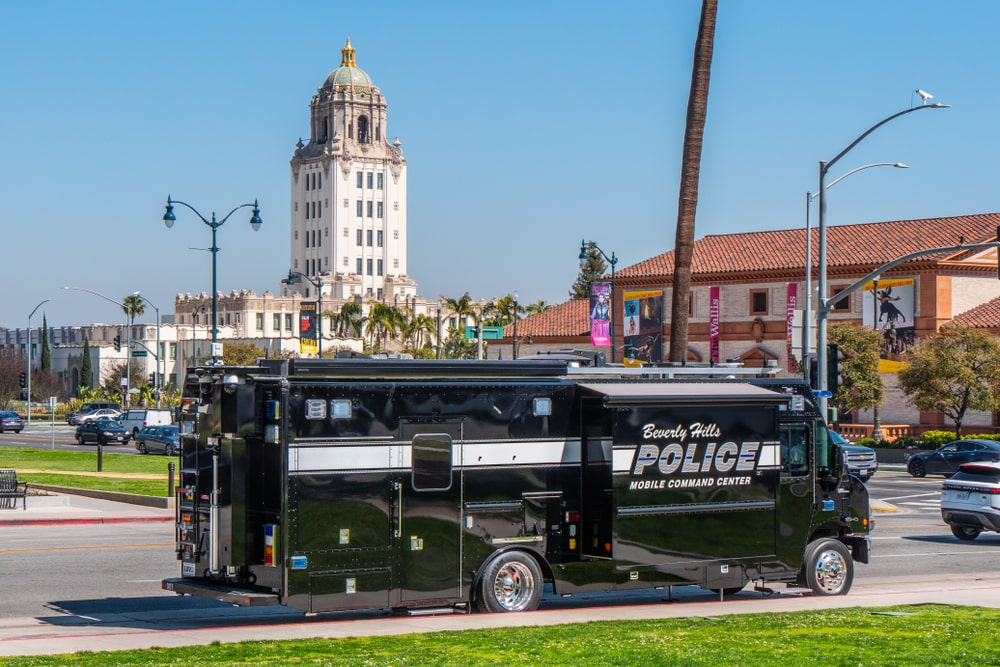
While police command centers, FBI command centers, and military command vehicles share a common goal of enhancing coordination and command capabilities, they exhibit significant variations in their missions, operational scopes, and levels of specialization. Police command centers cater to local law enforcement needs, FBI command centers address federal law enforcement and national security matters, and military command vehicles serve as versatile assets supporting a diverse range of military operations.
What are situations where a mobile command center is used?
Some common situations where mobile command centers are used include:
- Natural Disasters: Mobile command centers are deployed during natural disasters such as hurricanes, earthquakes, floods, tornadoes, wildfires, and severe storms. They serve as hubs for emergency management agencies to coordinate response efforts, assess damage, and assist affected communities.
- Large-Scale Public Events: Mobile command centers are present at major public events, such as concerts, sporting events, parades, and festivals, to manage security, crowd control, and emergency response. They provide real-time communication and coordination among event organizers and first responders.
- Mass Casualty Incidents: In situations involving mass casualties, such as transportation accidents, industrial accidents, or acts of terrorism, mobile command centers are used to establish incident command, coordinate medical response, and manage resources efficiently.
- Law Enforcement Operations: Law enforcement agencies deploy mobile command centers to support operations like hostage situations, SWAT missions, standoffs, major crime scenes, and search and rescue efforts. These centers facilitate command, communication, and surveillance.
- Wildfires and Forest Fires: In regions prone to wildfires, mobile command centers manage firefighting efforts, allocate resources, and coordinate response from multiple agencies, including fire departments, forestry services, and emergency management.
- Military Operations: The military employs mobile command centers during various operations, including combat missions, peacekeeping missions, disaster relief, and humanitarian assistance efforts. These units enable commanders to maintain situational awareness and make strategic decisions.
- Public Health Emergencies: During public health crises, such as pandemics or disease outbreaks, mobile command centers coordinate medical responses, distribute vaccines, and manage field hospitals and treatment centers.
- Search and Rescue Missions: Mobile command centers support search and rescue teams in locating missing persons, hikers, and disaster survivors. They serve as communication hubs and provide incident command capabilities.
- Transportation Incidents: Mobile command centers are dispatched to manage accidents and incidents on highways, railways, airports, and other transportation networks. They help coordinate response efforts, traffic management, and public safety measures.
- Homeland Security Operations: In matters related to national security, mobile command centers assist agencies like the Federal Bureau of Investigation (FBI), Department of Homeland Security (DHS), and other federal, state, and local agencies in coordinating counterterrorism efforts, border security, and disaster response.
- Large-Scale Exercises and Drills: Mobile command centers are used in training exercises and disaster drills to simulate and practice emergency responses, assess preparedness, and improve interagency coordination.
- Critical Infrastructure Protection: Agencies responsible for critical infrastructure, such as power plants, water treatment facilities, and telecommunications, deploy mobile command centers to manage incidents, cyberattacks, and security breaches affecting these facilities.
Why can mobile command centers help rural areas?
Mobile command centers offer versatile solutions for rural areas, addressing their unique challenges effectively. Thanks to advanced technology like satellite connectivity, they ensure reliable communication, even in remote locations. These units excel at rapid deployment, reducing emergency response times significantly. Centralized coordination and resource management enhance efficiency in multi-agency scenarios.
Additionally, they bridge healthcare gaps by providing immediate emergency medical services in underserved rural regions. They serve as efficient incident command posts during wildfires. Advanced technology aids search and rescue in rugged terrain, and they assist in managing critical infrastructure incidents. Mobile units engage with rural communities, fostering trust and enhancing disaster preparedness. Their flexibility allows for customization, making them adaptable to various rural challenges, from natural disasters to public health crises.

